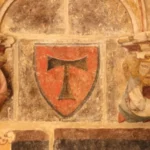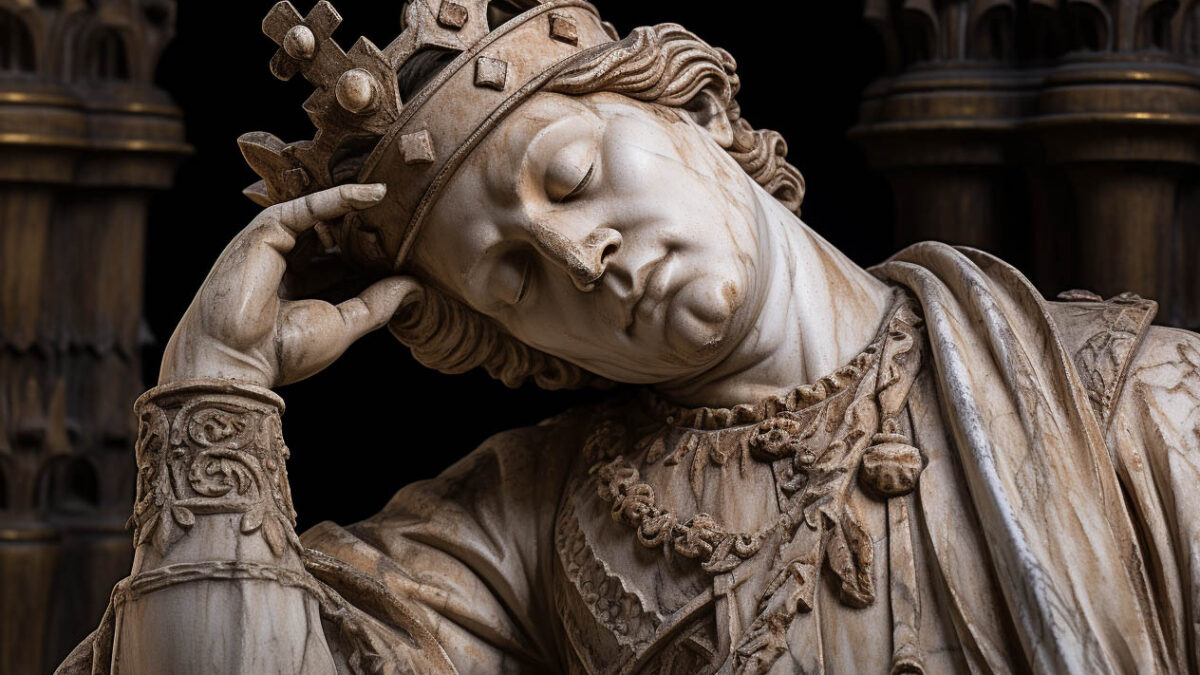
THE RELICS OF SANTA TECLA DE ICONIO IN SPAIN AND THE ARMENIAN KING OSHIN.
16 de January de 2024
THE VOICE OF ECONOMIC SCIENCE IN THE FACE OF THE LIMITS OF LIFE ON THE PLANET.
16 de January de 2024THE ARMENIAN KING WHO RULED MADRID IN THE 14TH CENTURY.
The Christian Armenian King Leo V, (occasionally Leo VI) belonged to a saga of kings who were able to remain on the throne for more than 300 years, until they were invaded by the Muslims.
King Leo V was the last of his saga who was born in 1342 in Cyprus and died in 1393 in Tournelles, France. He was the last king of the dynasty of the Hetumids, being the Lord of Little Armenia.
King Leon V, later would end up holding a new title, that of King Leon I of Madrid, Andujar, Guadalajara and Villarreal, this great privilege was granted to him in fair recognition by King John I since he never renounced his faith, even when the Sultan proposed it to him in exchange for his liberalization.
He was a good King, respected and loved in Madrid avoided conflicts, even kept in office all municipal and royal officials, although he was not without controversy, as the Council of Madrid was not very much in agreement, as they saw in him problems of succession and loss of rights and powers previously acquired by Madrid if the King himself continued.
Today many citizens of Madrid are still unaware that between 1383 and 1391 the jurisdiction of Madrid and its revenues were granted by King John I of Castile to King Leon V of Armenia, being the first and only King of Madrid, thus making Madrid the capital of Armenia Minor. In just posthumous recognition the city of Madrid named one of its streets after him.
The history goes back to the last quarter of the 14th century, when in the year 1375 Islam was on the verge of invading the first country in the world to be recognized as Christian, the so-called Armenia Minor or Cilicia, located in Asia Minor, which we mention to differentiate it from Armenia Major.
At that time Armenia of Cilicia was considered the last Christian stronghold in which King Leon V reigned, a country that was surrounded by a vast and wide Muslim territory which was growing at a great speed looking with bad eyes at its neighbor.
In the year 1375, the enemies of Armenia of Cilicia, called the Egyptian Mamelukes, engaged in a battle against the Armenian reign, which led to the King having to protect himself in his last stronghold, the fortress of Kapan. Place where finally given the superiority of the Mamelukes the King must lay down his arms and surrender to them. Once the King is arrested they make him prisoner, taking him alive to Cairo, with the purpose of asking for a ransom for his freedom and remaining prisoner under the power of the Sultan of Cairo.
Soon the man of confidence of the King, the Franciscan religious Jean Darder, who in turn had been his secretary, begins a journey of supplications through being the bearer of personalized letters to the different Christian kingdoms. In these letters, appealing in the content of the letter: "From that prison so hard, as it was in the power of the enemies of the faith of Jesus Christ" with the object that they should take pity on him and pay his ransom, earning whoever did so the favor of God and that of eternity in heaven.
Moreover, even the Pope of Avignon himself was persuaded to publish a papal bull in order to obtain money for his release in such a way that all those who gave that money would ingratiate themselves with God and with the church by doing a good deed.
The result was not long in coming and the day came when the miracle was worked and the Christian King of Castile, Juan I, took pity on him after learning that he had been a prisoner for several years and did not hesitate, deciding to pay his ransom and knowing that in this way he was getting closer to God and the Church.
The ransom became a great gesture of humility on the part of a Christian King to a Muslim Sultan and with the corresponding written request as a sign of supplication and also accompanied by generous and numerous gifts such as gold and silver jewelry worked by the best goldsmiths, some beautiful and selected falcons. Consequently, after what was agreed the Sultan accepted the gifts and letters and in a gesture of unprecedented generosity released Leo V on September 30, 1382, after his release King Leo V began his desired return journey.
The first thing he did was to leave to thank H.H. Pope Clement VII, who resided in Avignon, and not H.H. the Pope of Rome, since the Kings of Spain swore allegiance to the Pope of Avignon, so that this first visit of Leon V, guaranteed a great reputation among the clergy and he was also the direct benefactor of the Papal Bull. Later, Leo V, visited Barcelona and Tarragona, where he was received with all the honors that a King could boast, moreover, the fact that his ancestors gave the relics of Saint Thecla to Spain was taken into account.
In 1382 he arrived first in Italy and then in France, where he was received in audience by Clement VII and then left for Spain, where his liberator King Juan I awaited him with all the protocol honors of a King.
In 1383, King Juan I of Castile granted León V the reign of Madrid, Andújar, Guadalajara and Villarreal as well as an income of 150,000 maravedíes.
The council of Madrid showed its doubts to the King of Castile of that decision because it lost its condition of Villa de Realengo and to that effect they sent him some letters. The royal response to the Council was not long in coming and in his letter he ratified that the Armenian King had lost his reign defending the Holy Catholic Faith and consequently he would continue to be the King although he astutely clarified that he would be the first and only Lord of Madrid so that his descendants would have no rights of royal succession or of any kind.
This fact did not change neither politically nor economically the good progress of the Villa de Madrid, even the home of King Leon V, was in the Alcazar as it corresponded to such a high leader. It is said that he even improved and rebuilt the towers, which had deteriorated since the fire that took place during the reign of Enrique II.
Nevertheless the aspirations of this ruler Leon V, were centered in trying to recover his own reign and he never surrendered for what he initiated his own crusade centered in finding the support of important personages with whom he met without the wished success among others they stand out: Richard II, Charles the Bad, Gaston the Phoebus and Charles VI.
In 1391 King Leon V travelled from France, where he lived permanently, to the burial of his benefactor and friend King John I in the cathedral of Toledo. His memory will live on in his memory until his death, it was fair to recognize that his freedom would always be due to him.
In 1391 the aldermen of Madrid who were pressuring even with popular songs to obtain the revocation requested to King Juan I to replace their Armenian King, take advantage of the death of Juan I to pressure and influence the environment of Enrique III who only had 11 years to recover as it was his Madrid Council of Regency.
In 1393 Leon V died in his palace of Tournelles in France, of which his tombstone is still preserved as a just tribute to the history of this King, which reads in his epitaph: "Here rests the most noble and excellent Prince Leon of Lusignan, fifth Latin King of the Kingdom of Armenia, who surrendered his soul to God on November 29, the year of Grace of MCCCXCIII. Pray for him.
Author: Dr. José Daniel Barquero Cabrero. Professor and Professor of Economics and Business and CEO of SER, Strategic Economic Relations.
Copyright 2023 RACEF. Royal Academy of Economic and Financial Sciences.




